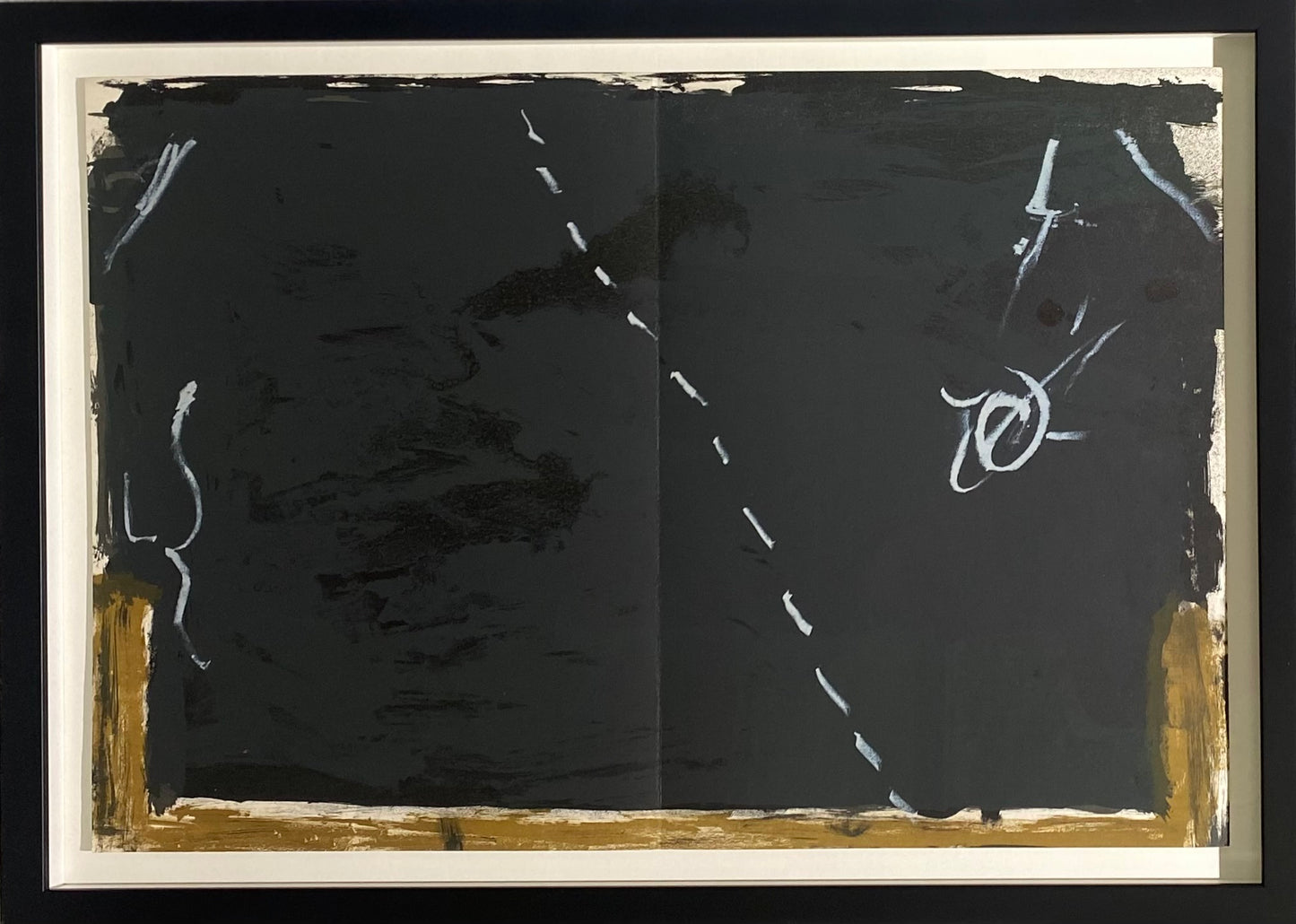Antoni Tàpies (Spain) | Noir et ocre, 1967 | Lithography, 38x56 (45x63)
Antoni Tàpies (Spain) | Noir et ocre, 1967 | Lithography, 38x56 (45x63)
Couldn't load pickup availability
The artwork is framed with museum glass ArtGlass70.
One of the most prominent Spanish artists of the 20th century, Antoni Tàpies (1923-2012), combined various concepts and materials in his extensive artistic practice. His work was influenced by early modernists such as Paul Klee, Joan Miró, and Art Informel artists like Jean Dubuffet. In all his paintings, prints, sculptures, and works on paper, Tàpies created a visual language full of thick, meaningless gestures, symbols, and cosmological scripts. The materials he used ranged from rubbish and earth to dust and stone, creating a sense of solidity and physicality throughout his oeuvre.
A. Tàpies participated in the Venice Biennale four times and exhibited in Paris, London, Barcelona, Brussels, Berlin, Tokyo, Zurich, and New York. His works have been sold at auctions for seven-figure sums (the most expensive piece was sold at a Christie's auction on July 1, 2014, for €2,060,484) and are included in the collections of the Pompidou Centre, Moderna Museet, Kunstmuseum Basel, Beyeler Foundation, Museum of Modern Art, and Tate.
Share


